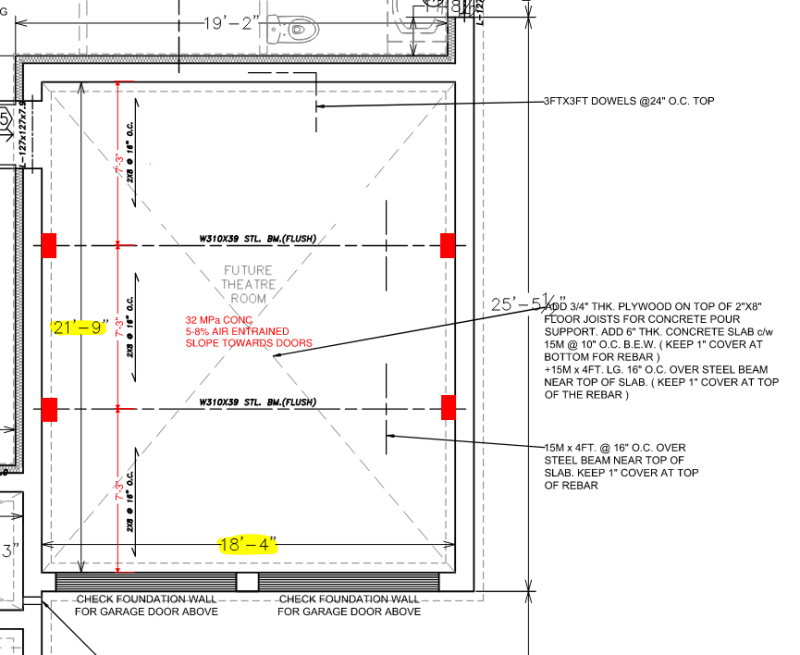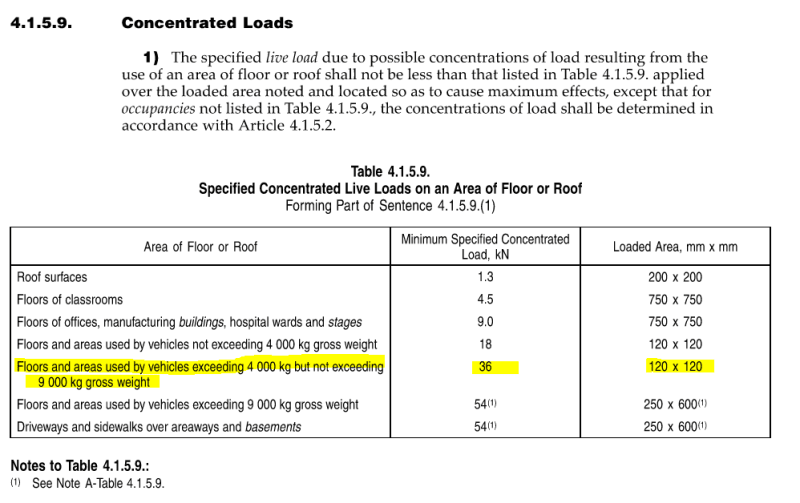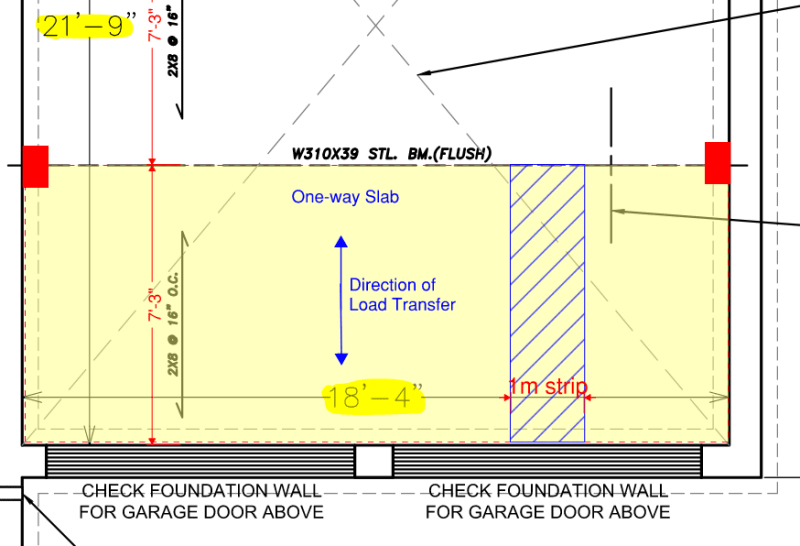Khashayar1
Structural
Hi everyone!
I hope you are all doing well. I have a client for whom I am designing a suspended slab for his two-car garage space(5600mmx6600mm), beneath the garage would be a future theater room. I have designed the slab to be supported by two steel beams along the 5600 length (no interior column), these two steel beams (W310) will seat on a 6"x"8" pilaster (no pocket into the foundation wall). and I'm also proposing a composite slab comprised of a 76mm steel deck, with concrete topping and 15M rebars @ 250mm on both directions.
For estimating the total slab thickness, I have used the one-way slab design approach and rule of thumb of Ln/20, considering length of 5600, with 1.0 m width, have resulted in a 12" (~300mm) slab thickness, which I have a sense that it is over conservative. I would appreciate your thoughts about the appropriate thickness in this scenario. Do you think if I go with a two-way slab design I can achieve a more optimized slab thickness? or is 300mm just as it should be? any thoughts or suggestions is much appreciated!
Thanks!

I hope you are all doing well. I have a client for whom I am designing a suspended slab for his two-car garage space(5600mmx6600mm), beneath the garage would be a future theater room. I have designed the slab to be supported by two steel beams along the 5600 length (no interior column), these two steel beams (W310) will seat on a 6"x"8" pilaster (no pocket into the foundation wall). and I'm also proposing a composite slab comprised of a 76mm steel deck, with concrete topping and 15M rebars @ 250mm on both directions.
For estimating the total slab thickness, I have used the one-way slab design approach and rule of thumb of Ln/20, considering length of 5600, with 1.0 m width, have resulted in a 12" (~300mm) slab thickness, which I have a sense that it is over conservative. I would appreciate your thoughts about the appropriate thickness in this scenario. Do you think if I go with a two-way slab design I can achieve a more optimized slab thickness? or is 300mm just as it should be? any thoughts or suggestions is much appreciated!
Thanks!




